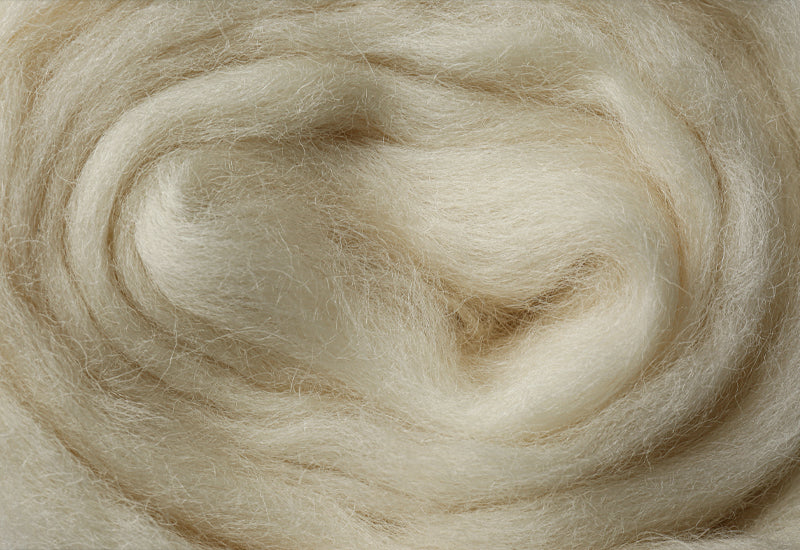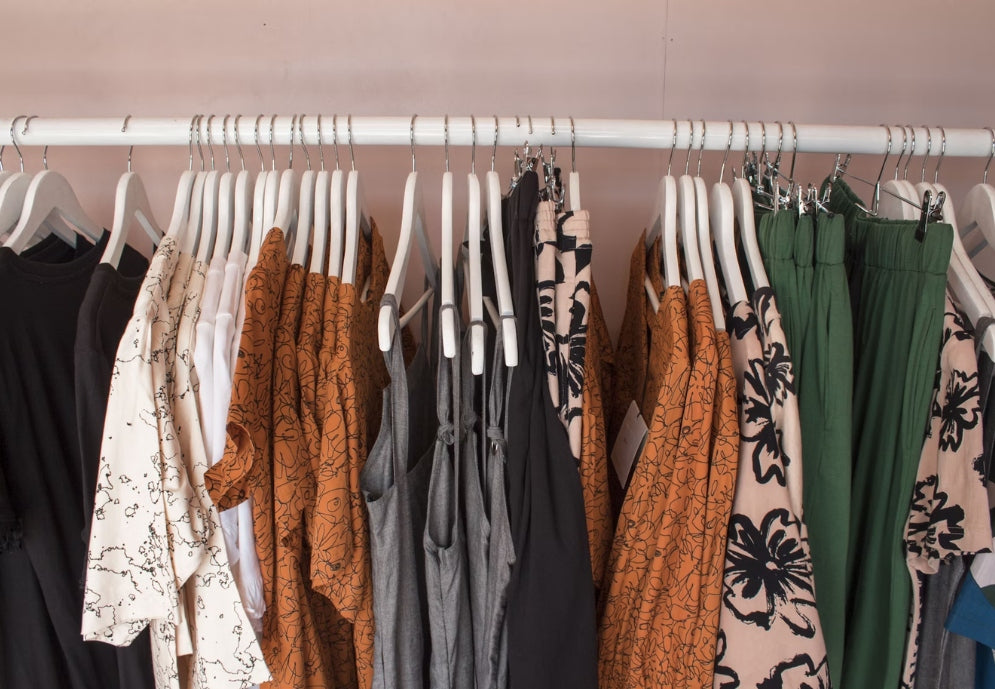Wool has been with us for centuries, valued for the way it brings warmth, comfort and versatility. Today, it continues to be woven into our daily lives, still holding a special place in what we wear and use.
In this blog, we’ll look at why wool matters, the benefits it offers, its sustainability and ethics, and some simple ways to care for your favourite woollen garments so they stay looking and feeling their best.
WHAT IS WOOL MONTH?
Wool Month is an annual, month-long celebration, organised by The Campaign for Wool. Launched in 2010 under the patronage of His Majesty King Charles III, the campaign was created to celebrate the unique benefits of wool and to support the farmers, makers, and industries who work with it.
Each October, Wool Month gathers designers, retailers, brands and consumers in a shared celebration, with events, collaborations and stories that remind us why wool deserves our attention and care. From the clothes we wear to the homes we create, it is a gentle reminder of wool’s natural strengths and of why this versatile fibre continues to hold a cherished place in our everyday lives.
At its heart, Wool Month is about more than fabric. It’s about helping people reconnect with the origins of their wool products, celebrating the skill that goes into making them, and encouraging choices that protect both tradition and the environment.
THE HISTORY OF WOOL
Wool has a long history, starting in the ancient Near East around 6000 BCE when people first domesticated sheep, initially for food and later for their wool. Early communities quickly realised that sheep skin offered warmth and shelter, and over time they learned to spin and weave the fibres into cloth.
Civilisations like the Sumerians and Egyptians used wool for clothing and trade, and by the time of Ancient Greece and Rome, it was well established as a valuable material across the Mediterranean.
In Medieval England, wool became a major part of everyday life and the economy. Regions like East Anglia and the West Country became famous for their high-quality fleece. Wool was so important to the economy that King Edward III placed taxes on its export and invited skilled Flemish weavers to settle in England to help grow the local wool industry. It helped fund the country and became such an important part of everyday life that wool was central to England’s growth and prosperity.
When the Industrial Revolution arrived, wool processing became mechanised, and countries like Australia and New Zealand emerged as big players in the global market. British wool maintained its reputation for quality and versatility. Brands such as Viyella, founded in 1784, became well known for blending wool with cotton to create durable, luxurious fabrics.
Today, British brands continue to innovate, using wool in fresh and exciting ways. From sophisticated Merino wool garments to cosy wool products for homes and interiors, modern wool makers are combining tradition with new techniques to keep wool relevant and practical.
Wool Month is a great chance to celebrate everything about wool, from its rich history to the ways we use it today, and to remind ourselves why it has stayed such a trusted fibre for generations.
WHAT ARE THE BENEFITS OF WOOL?
Wool possesses many benefits, including being naturally insulating, breathable and comfortable to wear in different conditions. It also has a number of other qualities that make it a reliable choice for both clothing and home textiles. These features include:
1. TEMPERATURE CONTROL
Wool adapts to temperature changes by trapping air between its fibres. This means it keeps you warm when it’s chilly, yet allows heat to escape when things warm up. It’s a clever, natural regulator that works with your body and is perfect for that in-between weather that ties Summer to Autumn!
2. MOISTURE MANAGEMENT
Wool fibres can absorb up to 30% of their weight in moisture without feeling damp, thanks to a natural property called hygroscopy. This means they draw sweat away from your skin, helping you stay dry and comfortable throughout the day.
3. GREAT BREATHABILITY
Wool allows moisture vapour to pass through, helping to prevent that sticky, clammy feeling. On top of that, it naturally resists odours thanks to its antimicrobial properties, so garments stay fresher between washes.
4. DURABILITY AND RESILIENCE
Wool is strong and flexible. It can be bent thousands of times without breaking, and because of its natural crimp (the waviness of fibres), it has good shape recovery and wrinkle resistance. This means that, over time, wool resists wear and keeps its look.
5. HYPOALLERGENIC & BENEFICIAL TO AIR QUALITY
Wool is naturally hypoallergenic and antibacterial due to the structure of its fibres and the natural lanolin (wool wax) it contains. It can help reduce dust and filter everyday pollutants from the air, making it a particularly good choice for anyone with allergies or asthma.
6. SAFETY AND COMFORT FEATURES
Wool is naturally flame-resistant, as its ignition point is much higher than many other fibres, making it safer in many textile uses. Also, its flexible nature gives it a soft drape and smooth feel, making garments more comfortable to wear.
IS WOOL SUSTAINABLE?
Absolutely! When wool is responsibly farmed, it is one of the most sustainable fabrics around. Sheep grow a new fleece every year, so it is a naturally renewable fibre, and when a wool garment reaches the end of its life, it is biodegradable, meaning that it can break down naturally without leaving any harmful microplastics behind.
Wool also lasts for years, sometimes even decades, if you look after it properly. So by caring for your wool jumpers, coats, and scarves, you are not just protecting your wardrobe, you are making a small but meaningful choice for the planet too.
IS WOOL ETHICAL?
Yes, wool can be an ethical choice when it comes from farms that treat their sheep with care and respect. Responsible farmers ensure animals are well looked after, with plenty of space to roam and proper nutrition throughout the year. Ethical wool production also avoids practices that can harm the animals, such as rough handling or unnecessary stress.
When you choose wool from trusted, certified sources, you can wear your jumpers, coats, and scarves with confidence, knowing they have been made with kindness towards both the animals and the people who work with them.
A lovely example of this is Marks & Spencer, which has recently introduced its first items made with Responsible Wool Standard (RWS) certified wool. This certification ensures the wool can be traced right back to carefully managed New Zealand farms, where sheep are well cared for and the land is looked after responsibly. By choosing RWS-certified pieces, you are supporting farms that prioritise animal welfare, protect the environment, and uphold transparent, ethical practices.
WHY WOOL FABRICS DESERVE SPECIAL CARE
Unlike many man-made fabrics, wool is a natural fibre that needs to be treated with a little more care. Its softness and warmth are part of what makes it so treasured, but those same qualities mean it can shrink, pill, or lose shape if it is not handled carefully. With the right care, wool can last for years, giving you beautiful garments that love you back.
DIFFERENCES BETWEEN WOOL TYPES
There are a variety of different wool types, and each brings its own character to the clothes we love.
- Merino - Known for being fine, lightweight, and soft against the skin, making it ideal for jumpers and base layers.
- Cashmere - Prized for its silky feel and warmth, but more delicate and in need of gentle handling.
- Lambswool - Soft, warm, and resilient, though it can pill more easily than finer fibres.
Because each type of wool behaves differently, the way you care for it makes a big difference. When caring for Cashmere, you’ll need to handle it with extra gentleness, while Merino is slightly more durable. Knowing the difference helps you to give your garments the best treatment possible, ensuring they look and feel wonderful for many more years.
HOW TO CARE FOR WOOL
Caring for wool is really about treating it with the gentleness it deserves. When it comes to washing, opting for handwashing is always the safest option. Use a small amount of Delicate Laundry Liquid and mix in cool water. Gently swirl your wool garment in the water for 10-15 minutes, and then rinse with clean, cool water until all soap suds are gone.
Afterwards, lay your garment flat on a clean towel to dry, rather than hanging it, as damp wool can easily lose its shape. It takes a little patience, but this quiet attention ensures your favourite jumpers and scarves will stay soft and beautiful for years to come.
Between washes, you may find a Knitwear Comb is a simple yet satisfying way to smooth away any little pills that appear, bringing the surface of your garment back to life. To comb through your woollen garment, hold the fabric taut and brush quickly and lightly, ensuring you lift away only the small pills without tugging at the fibres themselves. Work in one direction rather than back and forth, and you’ll soon see the surface regain its smoothness.
When storing, place your garments into a Cashmere Storage Bag for safekeeping and tuck a beautifully scented, moth-deterring, Drawer Sachet inside to keep them fresh and protected.
After all, we aren’t the only ones who love woollen garments - Clothes Moths tend to find them irresistible too! For extra peace of mind that your best woollens won’t be nibbled at, you could consider storing some Canada Red Cedar Moth Balls next to your garment storage bags, which will gently release their natural fragrance, whilst repelling moths and keeping your collection beautifully fresh.
These steps will ensure that the next time you decide to wear your best woollen jumper, whether it’s in a week or in a year, it will still look, feel and smell as beautiful as it did when you last folded it away.
OTHER LUXURY FIBRES
While sheep’s wool remains the most common, many garments today also feature fibres from other animals, such as alpaca and mohair (from goats). These fibres are prized for their softness, warmth, and luxurious feel, and they are increasingly found in high street brands like H&M and & Other Stories. Just like traditional wool, alpaca and mohair require gentle care to maintain their beauty and longevity, making them a lovely addition to your wardrobe when treated thoughtfully.
FINAL THOUGHTS
Wool has always been a fibre we can rely on, bringing warmth, comfort and strength to our everyday lives. From its ancient beginnings to the way we use it today, it has remained both practical and beautiful.
With just a little care and respect, your woollen garments will go on looking, feeling and smelling wonderful. Wool Month is a lovely reminder to appreciate this remarkable fibre, and to keep enjoying the garments you treasure for many more years.
For more advice or assistance with caring for your garments or moth protection, contact us today - we’d love to hear from you!




